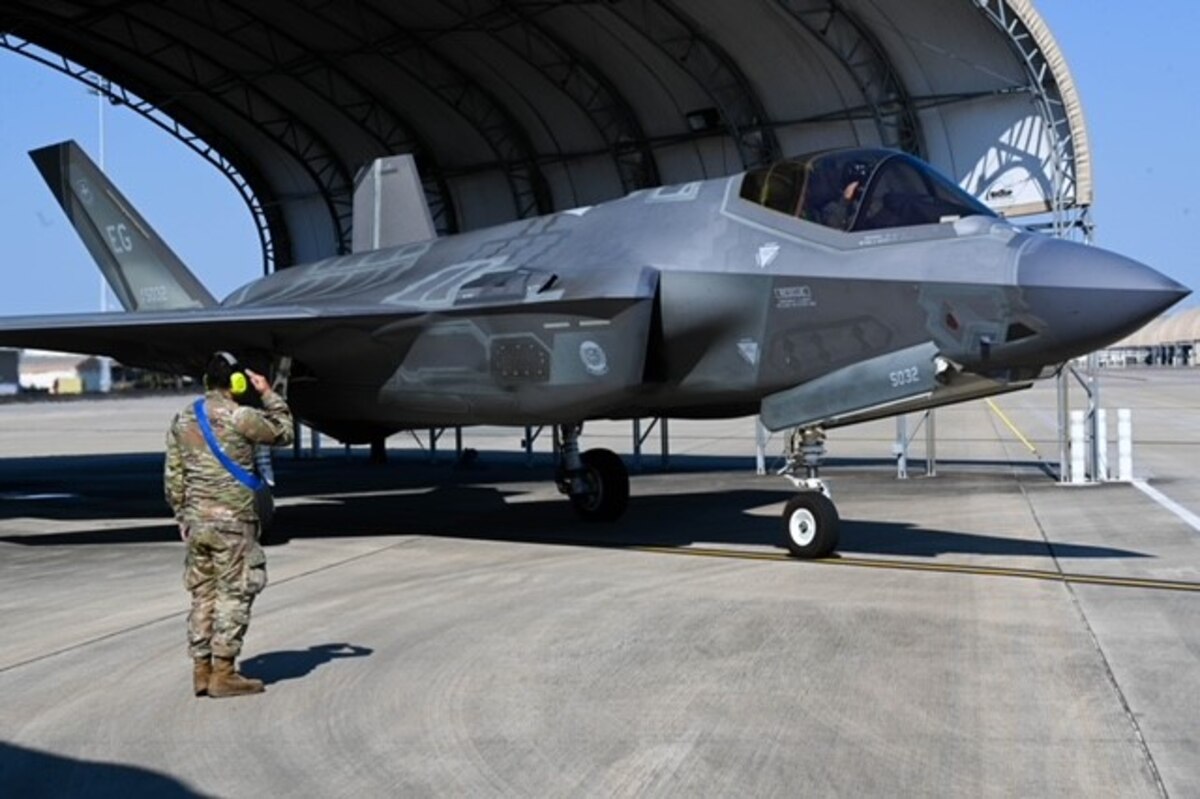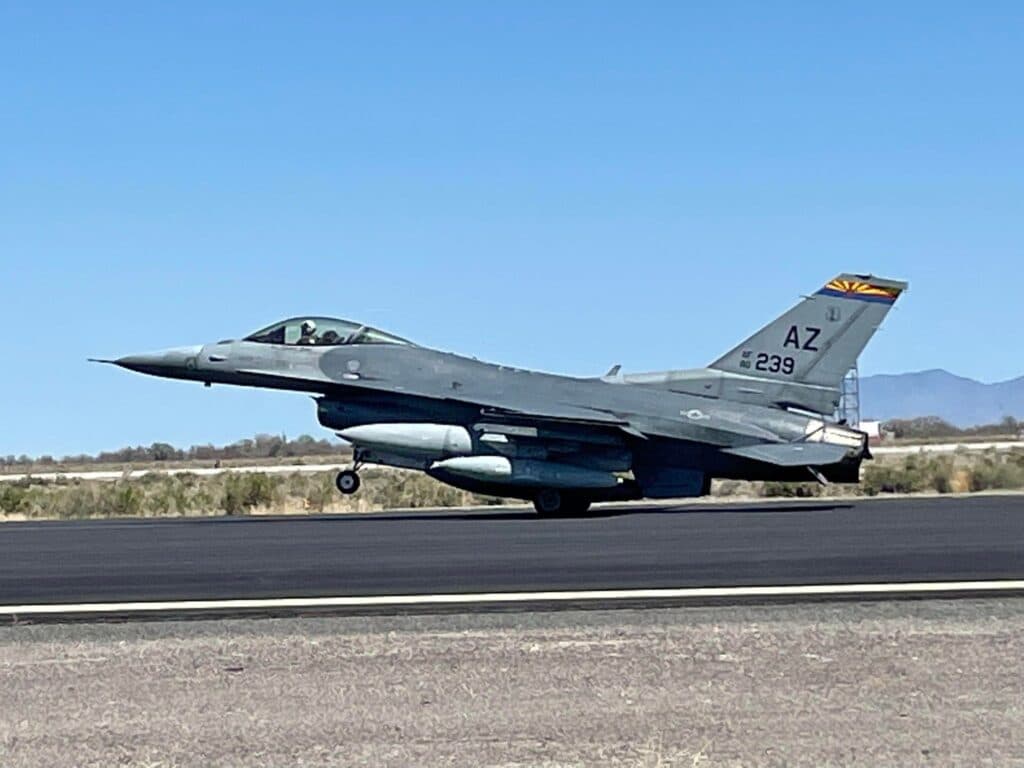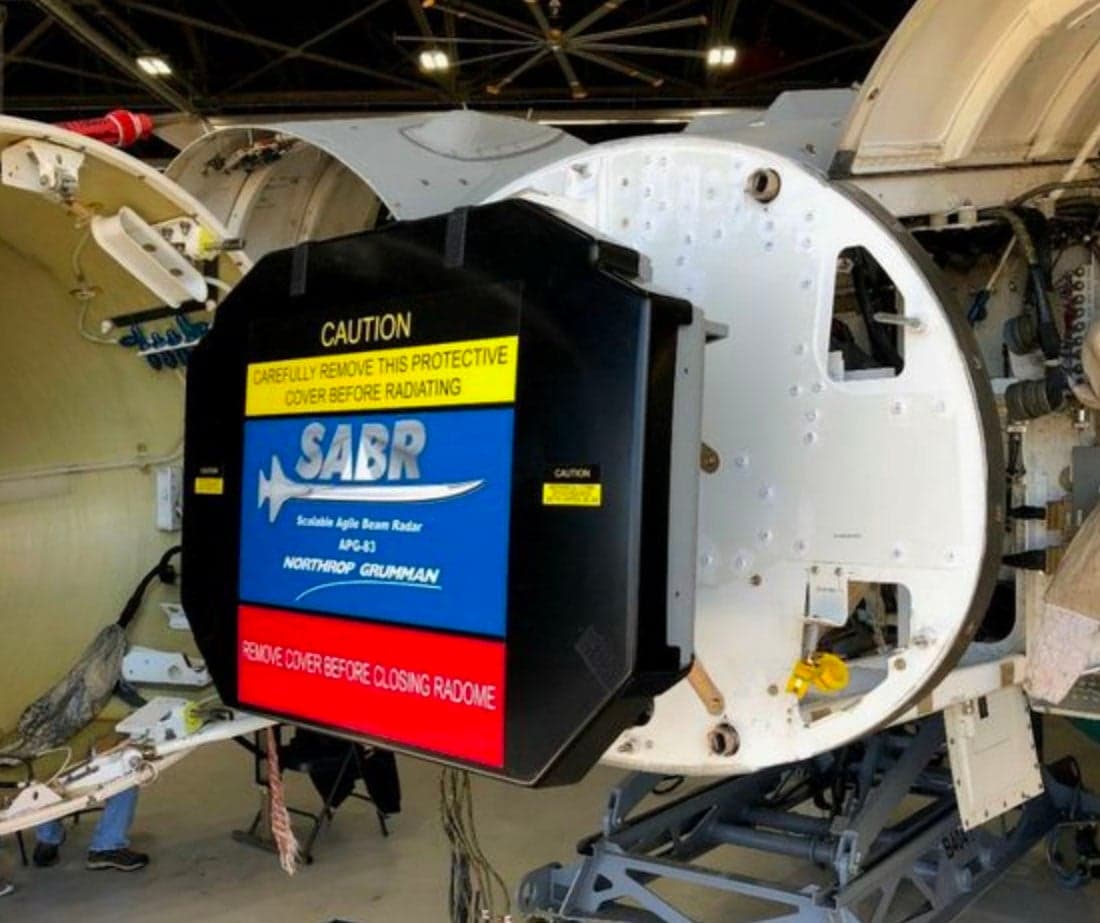The US Air Force (USAF) has finally got its first fifth-generation aggressor pilot for the recently reactivated 65th Aggressor Squadron (AGRS) at Nellis Air Force Base (AFB), Nevada.
Follow World Defence on Google News
The Commander of the USAF’s Air Force Operational Test and Evaluation Center (AFOTEC), Brig. Gen. Trey “Lou” Rawls has become the first general officer to be certified as a fifth-generation aggressor pilot on the F-35A Lightning II aircraft with the 65th AGRS.
“I’m incredibly thankful for the opportunity to fly with the 65th Aggressors,” said Rawls.
The USAF’s aggressors were established as a consequence of the service’s Project Red Baron study, which assessed the air war over North Vietnam to determine why there had been such a dramatic change in the outcome of air-to-air engagements in the conflict.
In the Korean War, USAF pilots had achieved a 10:1 kill ratio over North Korean and Chinese adversaries, whereas, during the conflict in Vietnam, the kill ratio dropped to 2.5:1.
Advertisement

The 65th AGRS was reactivated in June last year with the mission to know, teach and replicate fifth-generation air adversaries at Nellis AFB.
Before that, the squadron was active from 2005 to 2014, and during that time, it replicated the tactics and techniques of potential adversaries with a fleet of F-15 Eagles.
Advertisement
ALSO READ: China Furious As US F-22 Raptor Shoots Down Its ‘Spy Balloon’ Using AIM-9X Sidewinder Missile
US Pilots Prepare To Meet J-20 Threaat
Interestingly, shortly before activation of the 65th AGRS, US Pacific Air Force Commander General Kenneth Wilsbach revealed that the J-20 of the PLA Air Force (PLAAF) and the F-35 of the USAF had their first-ever ‘encounter.’
“It’s a bit early to say what they intend to do with the J-20, so really, all we’ve seen it do is air superiority. But we notice that they are flying it pretty well. We recently had – I wouldn’t call it an engagement – where we got relatively close to the J-20s and our F-35s in the East China Sea. We’re relatively impressed with the command and control associated with the J-20,” General Wilsbach said in March 2022.
Therefore, using the F-35 as an aggressor platform will allow the USAF pilots to train against low-observable threats like the Chinese J-20 or the Russian Su-57.
Advertisement

“Due to the growing threat posed by PRC [People’s Republic of China] fifth- and sixth-gen fighter development, we must use a portion of our daily fifth-generation aircraft today at Langley, Elmendorf, Hill, Eielson, and now Nellis to replicate adversary fifth-generation capabilities,” said Gen. Mark Kelly, commander Air Combat Command, during the reactivation of the 65th AGRS. “Precisely because we have this credible threat, when we replicate a fifth-gen adversary, it must be done professionally. That’s the aggressors.”
The F-35 offers an adversary air platform that enables the 65th AGRS to customize the jet to replicate the desired red air aircraft through mission planning software. The 65th AGRS determines these settings with the help of the intelligence community.
As the AFOTEC Commander, it is Rawls’ responsibility to ensure independent testing and evaluation of new and existing systems for the USAF. Therefore, Rawls flying with the 65th AGRS is expected to provide a unique opportunity to determine how an Operational Test Agency can contribute to improving warfighter training.
“We must ensure we’re keeping up with and surpassing our adversaries,” said Rawls.
Advertisement

Rawls further explained that in his role as an aggressor, he would present the USAF airmen with the types of challenging problems they are likely to face from the adversaries and provide material solutions and capabilities to address those problems.
“The challenge is that we’re no longer the only big kid on the block regarding technology,” said Rawls. “However, we’re still king of the hill when it comes to training, readiness, and talent. AFOTEC has an important role in ensuring the US remains the world’s most dominant purveyor of air power. We do this by ensuring we only focus on problems that need solving and then relentlessly pursuing those solutions that enable us to continue to enjoy an unfair advantage,” he added.
Advertisement
READ MORE
US Navy To Increase Its Aggressor Capabilities With The Help Of USAF
The Russian aggression in Ukraine and the looming Chinese threat have worried the US military about conventional threats from near-peer adversaries.
Therefore, like the USAF, even the US Navy is trying to increase its aggressor capabilities, however, the service has turned to the USAF due to budget constraints.
As part of that, the F-16s retired by the USAF are replacing the F-5N Tiger 2s belonging to Fleet Composite Squadron (VFC) 13 “Fighting Saints” at US Naval Air Station Fallon in Nevada, which is the Navy’s Reserve Force Squadron that specializes in replicating adversary threats or ‘red air’ in support of the US Naval Aviation Warfighting Development Center (NAWDC).

The VFC-13’s F-5s are being sent to Naval Air Station Joint Reserve Base New Orleans, Louisiana, to replace the aging F/A-18 Legacy Hornets belonging to Fleet Composite Squadron VFC-204 or ‘River Rattlers,’ another Naval Reserve unit specializing in red air, which was earlier designated as a VFA Strike Squadron.
However, there is a drawback to the F-5N, as it lacks an air-to-air refueling capability, unlike the USAF aggressor platforms, which can refuel and return to the fight. The US Navy’s F-5s fly one section to intercept the Strike Groups as they ingress (or enter), and then a second flight has to be scrambled against the strikers during their egress.
Advertisement

In addition, the NAWDC will receive another eight Block 32 F-16Cs and six Block 25 F-16Ds to replace its remaining Legacy Hornets.
These F-16s are slated to be upgraded for transforming Fallon’s adversary capabilities to provide modern threat replication in support of some of the highest-end air combat training the US Navy does, including supporting Topgun, and Fleet Replacement Squadrons, Carrier Strike Groups, Carrier Air Wings and Unit Deployment Plan training.
The F-16s will undergo airframe strengthening to prevent aircraft grounding due to fatigue and extend their service life to 8,000 equivalent flight hours.
Also, the F-16s of Fallon’s NAWDC will be upgraded with the new Northrop Grumman AN/APG-83 Active Electronically Scanned Array (AESA) radar so that they are better able to challenge the Navy’s modern fourth- and fifth-generation fleet strike fighters.
Advertisement

The APG-83 provides the F-16s with advanced capabilities similar to fifth-generation fighters like the F-22 and F-35. Compared to the existing mechanically scanned radar, such as APG-68, the APG-83 can detect, track and identify greater numbers of targets much faster and at much longer ranges.
The new AESA radar will enhance the F-16’s ability to counter increasingly sophisticated threats, such as low-flying enemy cruise missiles that will have small radar cross-sections. The APG-83 is also said to resist being jammed or fooled by enemy countermeasures.
Furthermore, the US Navy’s East Coast Aggressor Squadron, VFC-12, at the Naval Air Station (NAS) Oceana, Virginia, has begun its transition from legacy Hornets to Block I Super Hornets, which is taking longer than earlier expected due to the shortage of Super Hornets that can be spared. There is no relief projected until 2024 at the earliest.
This shortfall of fighter jets has also led the service to consider reducing the F-35C aircraft squadron size by proposing a change from the current ten aircraft per Lightning II squadron (with two squadrons per air wing) to 14 aircraft in a single squadron per air wing.
Images of the VFC-12’s Super Hornet sporting a similar painting scheme as in Shenyang J-11 and J-16 fighters of Naval Aviation (PLAAN) and Air Force (PLAAF) of China have been circulating.
Also, a part of the right side of the leading edge extension (LERX) of at least one such Super Hornet has been painted in a lighter tone to replicate the panel of the GSh-30-1 cannon of the Russian/Chinese fighters.
The painting applied to the tail of the same aircraft also emulates the shape of the vertical stabilizers of Chinese aircraft, which have a chamfered tip. These are fiberglass dielectric fairings, which cover the navigation and communication antennas.
Advertisement

Meanwhile, the VFC-111 ‘Sundowners’ stationed at NAS Key West, Florida, will retain its F-5Ns for the foreseeable future.
The NAS Fallon also uses civilian companies contracted by the US Navy to fly traditional military missions, such as Tactical Air Support, which operates F-5ATs from nearby Reno/Stead Airport, Nevada, the Draken International Aero L-159E Honey Badgers, and the Pennsylvania-based Coastal Defense Inc’s L-39 Albatros.
Tac Air’s F-s have been operating alongside VFC-13’s F-5Ns and will continue to provide Dissimilar Air Combat training after VFC-13 converts to the USAF’s F-16. Meanwhile, Draken International’s L-159Es provide training to back-seaters in employing munitions.
The Coastal Defense’s L-39s, equipped with camera pods, are used to aid in training to provide real-time results in missions, which can help in-flight refinements.
Follow World Defence on Google News
Advertisement